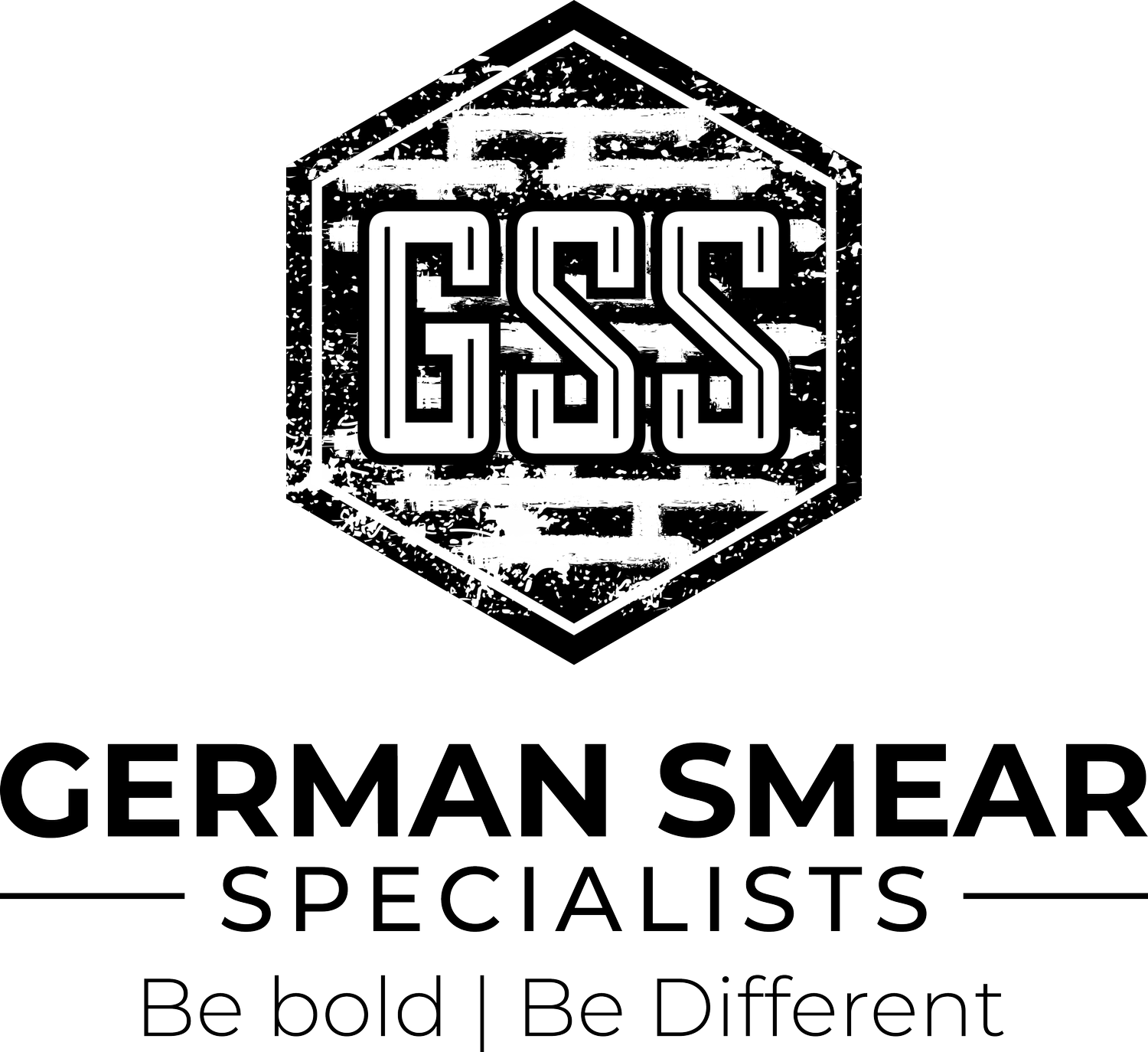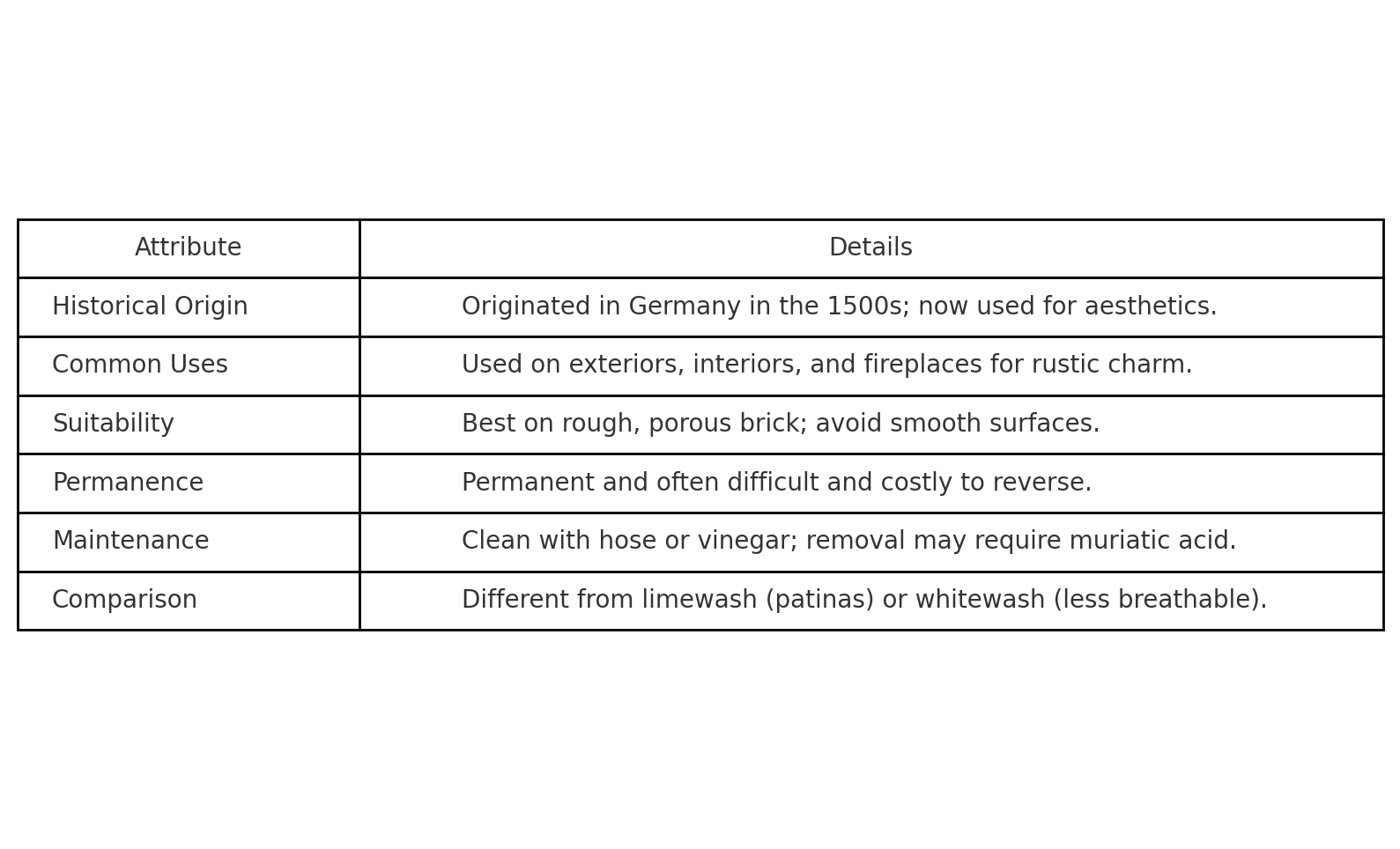A Detailed & Comprehensive Look At German Smear
Key Points
German Smear, also known as German Schmear or mortar wash, is a masonry technique for updating brick surfaces.
It involves applying and partially removing wet mortar to create a textured, whitewashed look, often resembling old European architecture.
Research suggests it’s popular for adding rustic charm to homes, especially exteriors, interiors, and fireplaces.
The evidence leans toward it being permanent, but it’s not suitable for all brick types.
What is German Smear?
German Smear is a technique where a thin layer of wet mortar is spread over bricks and then partially wiped off before drying. This creates a textured, whitewashed appearance that gives homes a rustic, old-world charm, often seen in European cottages and castles.
Where is it Used?
It’s commonly applied to exterior walls, interior brick walls, and fireplaces, enhancing their aesthetic appeal with a distressed look.
Considerations
While it allows bricks to breathe, it’s permanent and not ideal for smooth or bricks.
Maintenance involves simple cleaning, but removal can be difficult and costly.
For more details, see:
Note on German Smear
German Smear, also referred to as German Schmear or mortar wash, is a masonry technique that has gained popularity for its ability to transform the appearance of brick surfaces, offering a rustic, old-world charm reminiscent of centuries-old European architecture. This section provides a comprehensive overview, drawing from multiple reputable sources to ensure a thorough understanding of the technique, its applications, costs, and considerations.
Definition and Historical Context
German Smear is defined as a process where a thin coat of wet mortar is applied to brick or stone surfaces and then partially smeared off, leaving behind a textured, whitewashed appearance. According to sources like Southern Living and Better Homes & Gardens (BHG), this technique has roots dating back to the 1500s in Germany, initially used for practical purposes but now valued for its aesthetic appeal. It’s often highlighted in modern home improvement contexts, notably popularized by shows like HGTV’s Fixer Upper, as noted in the Southern Living article published on September 22, 2024.
The BHG article, updated as of January 26, 2025, emphasizes its nostalgic, farmhouse look, achieved by applying thick mortar paste and removing some for an artistic effect, first introduced in Germany centuries ago.
Aesthetic and Functional Benefits
German Smear is praised for its ability to update outdated brick with a historic feel, softening harsh lines and creating an irregular pattern. Bob Vila notes it mimics the appearance of centuries-old cottages, traditionally using white mortar over red brick, though experimentation with colors is possible. BHG highlights its cost-effectiveness for smaller applications, such as fireplaces or interior walls as well as backsplashes, and its ability to allow bricks to breathe, reducing the risk of moisture-related issues like mold or mildew, as mentioned in Newline Painting’s guide updated for 2025.
Unlike paint, which can trap moisture, German Smear forms a durable protective layer, requiring little maintenance, as per the Newline Painting article. This is a significant advantage, especially for exterior applications, where longevity is crucial.
Suitability and Limitations
Not all bricks are suitable for German Smear. BHG advises against using it on clean, modern looks, smooth brick surfaces, or historic brick, which can be soft, cracked, or crumbling. It’s best for rough, porous, textural brick, as noted in the article. Bob Vila also mentions it won’t adhere to painted surfaces, reinforcing its use on bare brick only.
The permanence of German Smear is a significant consideration. Both Bob Vila and BHG stress that it’s a permanent treatment, difficult and costly to remove, often requiring muriatic acid for interior soot or exterior dirt cleaning. Mistakes can be expensive, with removal costs sometimes exceeding application costs, and in some cases, it may be impossible to revert, as per BHG.
Comparison with Other Techniques
German Smear is often compared to limewash and whitewash. BHG clarifies that limewash is lime-based paint that patinas over time and allows brick to breathe, while whitewash involves heavily diluted acrylic paint, not recommended for masonry due to lack of breathability. German Smear, in contrast, does not change over time and is more about the immediate textured effect. Alternatives for a similar look include using moderately diluted Classico Limewash with a trowel or Romabio Travertino for a thick, smeary finish, as suggested by BHG.
Bob Vila compares it to whitewashing, noting the use of mortar instead of diluted latex paint, highlighting the distinct material difference.
Maintenance and Long-Term Considerations
Maintenance is relatively simple, involving spraying with a garden hose for exterior dirt or using brick-cleaning products or a vinegar-water mix for interior soot, as per Bob Vila. However, the difficulty in removing mortar, often requiring muriatic acid, underscores the importance of getting it right the first time. BHG warns that improper application can trap moisture, leading to cracks, peeling, or flaking, which could compromise the brick’s integrity over time.
Practical Examples and Inspiration
Real-world examples abound, with brick&batten’s article from March 29, 2023, showcasing eight German Smear brick homes for inspiration, emphasizing its role in updating exteriors without expensive replacement. Personal accounts, like the one from Porch and Peony detail transforming a neighborhood home to stand out, with the process aging well over three years, as shared in their June 10, 2022, post.
Expert Insights
Experts like Allison Vaccaro of Brick & Batten and Leslie Aiken of Romabio, cited in BHG, provide professional perspectives on its application and suitability. Alonzo Perez of Alexander and Xavier Masonry, mentioned in Southern Living, explains the technique’s textured, whitewashed effect, adding credibility to the process.


